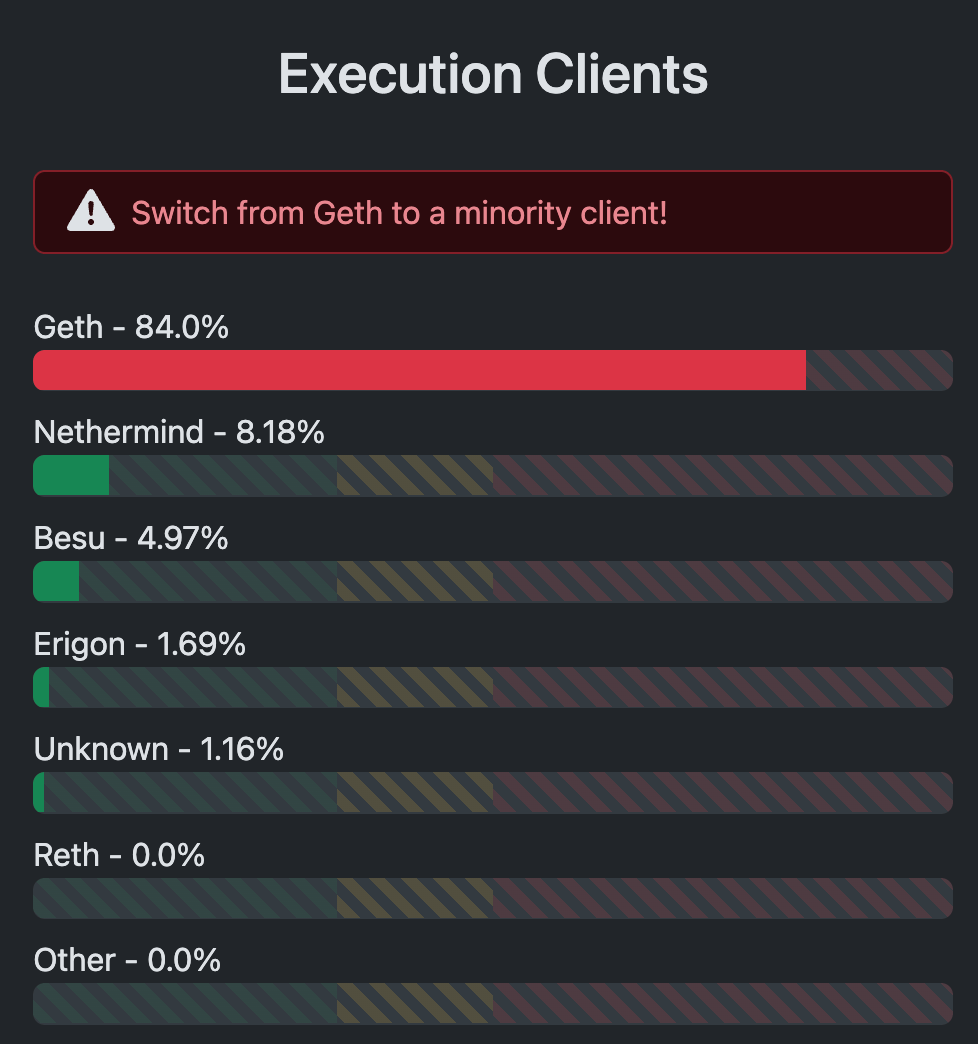Ethereum in trouble. In the current crypto landscape, the Ethereum network remains the main gateway to sectors like DeFi and NFTs. But the chronic increase in its transaction fees forces investors to turn to layers 2 and other alternative solutions. A stack presented by some as beneficial, while others simply see the limits of this emblematic blockchain.
Because this fragile balance is also undermined by increased risk of centralization since his time at Proof of Stake. And the recent bug encountered in the client software Nethermind once again revives this recurring fear. With, in the background, a Dencun upgrade which could put a damper on the very recent deflationary logic of the cryptocurrency ETH.
Ethereum: Critical bug in Nethermind
The upward trend initiated since the end of last year on the market for cryptocurrencies looks set to take a break. But each day is enough of its punishment, if we are to believe the latest news from the network Ethereum. Because this start of the week seems quite chaotic for the second blockchain of the crypto ecosystem.
Indeed, a important bug just hit one of its execution clients, named Nethermind. Software implemented since the transition of the Ethereum network to Proof of Stake (PoS), whose main function is to allow validators to interact with the network. But over the weekend, nothing went as planned.
“If you are affected by the Nethermind consensus bug, you can try resyncing your node. This is a quick fix, but the problem may reappear until we have a proper solution. We are working on it. »
DanielCtechnical manager at Nethermind
A flaw apparently fairly quickly managed. But this bug will still have mistreated the 8% of validators affiliated with Nethermind, because it will have been sufficiently important to take them offline. Which implies a penalty from the Ethereum network.

However, the real problem lies elsewhere. Because this bug once again highlights the risks inherent in the diversity of clients as part of securing the Ethereum network. And the main one of them is the too much centralization of the latter on the Geth client software (84%). Even the website Customer Diversity displays a warning on the subject at the top of its page dedicated to staking.
According to estimates by Dankrad Feist, researcher for the Ethereum Foundation, a bug of this magnitude with Geth could trigger the finalization of an invalid block. A real “catastrophe” which requires “that no client holds more than 2/3 of the shares” in order not to witness this scenario. To the wise…
End of the party for the ETH cryptocurrency?
Despite an ambitious road map drawn up by Vitalik Buterin, the Ethereum network is off to a bad start this new year. And to perfect the atmosphere, another piece of information has just fallen like a chopper. Code name : Dencun.
Indeed, the next upgrade of the Ethereum network wish facilitate layer 2 transactions towards its blockchain, with the help of blockspace. A way to reduce the gas consumption deemed to be highly excessive in this network. But, at the same time, the principle of ETH burn associated with this activity would be found severely slowed down.
“Transactional call data represents 90% of the costs paid by layers 2 in terms of gas fees. But after the Dencun upgrade they will be able to use the new blobspace mechanism, which significantly reduces gas costs. If we expect layer 2s to gradually transition to using this new blobspace mechanism, we could see gas prices stabilize at lower levels, meaning less ether will be burned. »
Luke Nolan, CoinShares Ethereum Research Associate
And as Ethereum enthusiasts know, this destruction (burn) of ETH at the time of validation of a transaction is the condition sine qua non of its brand new deflationary character. Would the party be over before it even really started?
The Ethereum network begins this new year with a few grains of sand in its cogs. However, JP Morgan specialists promise to see it outperform Bitcoin in 2024. And, since its transition to Proof of Stake, few challenges still scare its community of developers.
